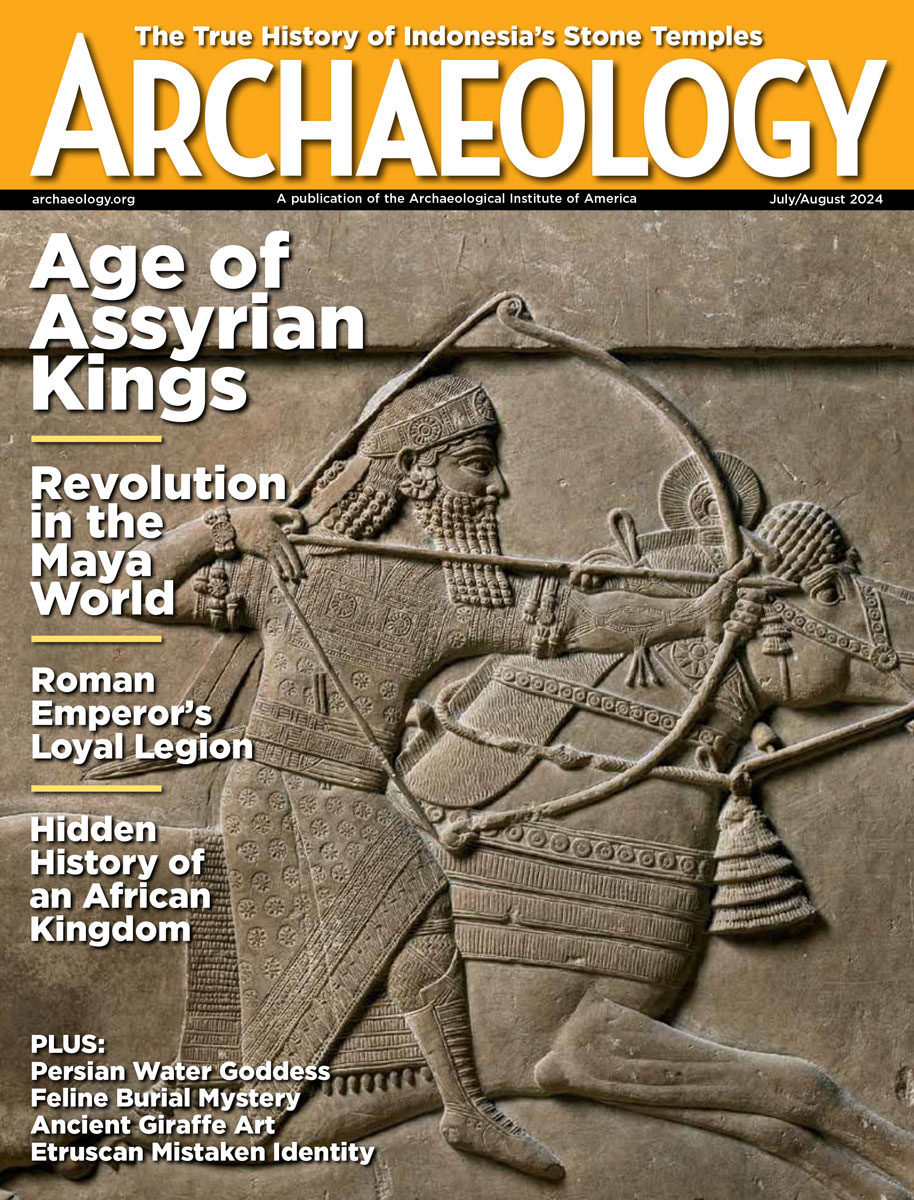Friday, May 4
May 4, 2012
High-tech tools have been used to take a new look at the La Virginea Pars map, which was drawn between 1585 and 1586 by British explorer John White. There are two patches on the very accurate map—it turns out that one corrects a mistake. The other patch covers a symbol that appears to be a fort. Scholars from the British Museum, which owns the map, and the First Colony Foundation think the fort image could indicate the Lost Colony’s plans to move from Roanoke to another location.
What was supposed to be a mock archaeological excavation at a construction site at Bonn University uncovered a 2,000-year-old Roman temple. The floor of the temple was scattered with pottery. It had been thought that settlements in that part of Germany were only to be found closer to the Rhine River. The site will be filled in when the archaeological investigation is completed.
Scientists are debating the evidence for the time of the arrival of modern humans in Asia. Thick ash deposits in India’s Jerreru Valley were created by a volcanic eruption that took place on the Indonesian island of Sumatra 74,000 years ago. Archaeologists have discovered stone tools beneath that ash deposit. But were those tools crafted by modern humans, or a human ancestor? Genetic evidence taken from current populations suggests that modern humans traveled quickly out of Africa perhaps 60,000 years ago, after the eruption of the Toba volcano. But what if genetic traces of the first modern Asians have been lost? “We’re at the tip of the iceberg, really. We’ve done the best we can with a few sites,†said Michael Petraglia of the University of Oxford.  Archaeological and genetic evidence is also being employed to create a new model for the arrival of people in North America. “Clovis has been king for 50 years, and now we have to re-imagine what the peopling of the New World looked like. If it wasn’t Clovis, what was it?†said Jon Erlandson of the University of Oregon.
Mexico’s National Institute of Anthropology and History announced that traces of human blood, muscle, tendon, skin, and hair have been found on 2,000-year-old obsidian blades with a scanning electron microscope. “These finds confirm that the knives were used for sacrifices,†said researcher Luisa Mainou. The 31 blades that were tested are from the Cantona site in central Mexico.
- Comments Off on Friday, May 4









